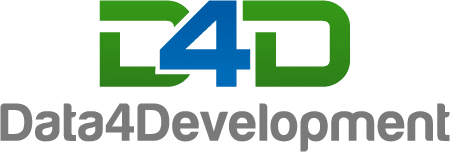In the upcoming months the Dutch Ministry of Foreign Affairs will open their call for proposals for the Strategic partnerships 2.0 ‘Strengthening Civil Society’. Donors increasingly focus on transparency and impact of projects, which need to be supported by data. The following tips can guide your organization with writing a data driven proposal in order to increase the chances of winning the grant.
1. Don’t underestimate the workload
As a nonprofit you have to demonstrate to your funder or the public that you are deserving of funding. Besides the guidelines mentioned by the donor, a proposal has to contain the organization’s vision, history, programs, finances, relationships with partners and so forth. These will speak towards the reputation of the organization as well as it credibility. Collecting, cleaning and visualizing data for the proposal can be challenging. Writing a proposal therefore is a lengthy process, which includes research, organizing data and resources and creating a clear financial picture.
2. Research the context and intervention
As mentioned before, it is important to ‘prove’ your organization’s added value. Sometimes nonprofits focus too much on the narrative side of a project or intervention through which they can miss out on including relevant data. Therefore, it is important to support the narrative proposal with a proper understanding of the context and your proposed intervention with both quantitative, qualitative and comparative data to define why your intervention works. A successful proposal cannot be made based on assumptions, but needs to be supported by facts.
- If possible, read a winning proposal, to see how they have supported their narrative with data.
- Embed you proposal in the local context: look for primary data sources of the local context, validate amongst local stakeholders
- Use a combination of hard data (facts and figures) and soft data which convey the experiences of those affected by the given challenge.
- Use comparative data to illustrate how the proposed intervention in other contexts has changed the situation. Explain why you expect this intervention works in the targeted context.
- Use citations to support the facts and figures and make the proposal transparent.
3. Have a clear plan
After doing research on the project and proposed intervention, both the organizational data, as well as the aforementioned research can be organized to start writing the proposal. To make sure the proposal will be a success, it is important to have a clear plan in place for the writing process.
- Organize all data necessary for your proposal from both your research as well as your organizational data.
- Organize a team, create a clear planning and divide the tasks. Use Trello to keep an overview of your workflow.
- Create a clear timeline, including what has already happened and what still needs to be organized for the project to be a success. Including resources, partners, and all other aspects which need to be organized.
- Make sure you have ‘one source of truth’ and not multiple versions of documents and data to prevent confusion and extra work.
4. Tell a clear financial story
One of the most important aspects of a proposal for many donors, is the financial picture of your proposed intervention. It should give a clear image of your expenditure and all mentioned expenditure should be justified.
- Make sure that all budget items meet the donor requirements.
- As the budget usually is presented through a spreadsheet, it is good include a narrative part to explain the budget to the donor, which is also called the budget justification. This is not always explicitly mentioned by donors.
- Make sure to include you audited statements and other relevant accounting data that the organization produces, and where relevant visualize the data through figures and tables.
5. Define and measure the change you want to achieve
Measuring the success of your project is another major part of writing a data driven proposal. A clear monitoring framework will increase comprehension of the intervention’s objectives and goals, as well as connecting these key factors and risks to the implementation.
- Describe the methodology of how you will monitor, evaluate and achieve the aimed for results.
- Keep it simple! Measure the most important indicators for change.
- Make sure your results are measurable and realistic.
- Make sure your aimed for results are consistent with your organization’s mission statement and objectives.
- Make sure your results can be used to uploaded to the IATI database for transparency purposes. This is a precondition for projects funded by the Dutch and British Ministry of Foreign Affairs.
Of course there are many other aspects towards writing a proposal, however donors are focusing more and more on measuring and expressing social change. Therefore, if you need any additional help or advice while writing your proposal, contact Data4Developement. We offer services from IATI consultancy to dashboarding to aid you in writing a data driven proposal and increase your organization’s impact.
